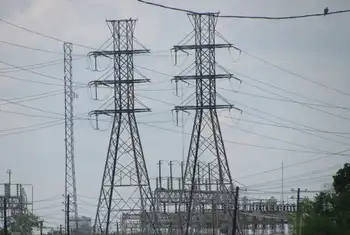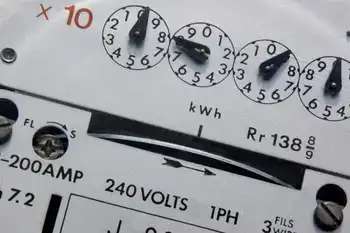Ontario claims coal-fired emissions below 1990 levels
By Toronto Star
NFPA 70e Training - Arc Flash
Our customized live online or in‑person group training can be delivered to your staff at your location.

- Live Online
- 6 hours Instructor-led
- Group Training Available
Duncan said the province has engineered a 32 per cent drop in power generation from coal-fired plants over the past three years and is the only North American jurisdiction committed to closing such plants.
While the Conservatives claimed the decrease in emissions is simply a result of more nuclear power coming online and not due to any government strategy, Duncan said the Liberals are getting the job done.
"The coal numbers are going down, period, even though demand is going up," Duncan said in an interview.
"Wind, biomass, solar – and yes, nuclear – all of them are going up... because we're getting out of coal. When we came to office, coal accounted for 25 per cent of our energy mix. Today, it's 16 per cent. That's a reduction of a third, and we're going to keep going in that direction."
But Conservative Leader John Tory said it was disingenuous for the Liberals to take credit for lowering emissions when they simply benefited from more available nuclear energy and didn't work to make the coal plants cleaner.
"It takes a lot of gall for the McGuinty government to take credit for reduced emissions when they've done absolutely nothing proactive on their own to bring about a reduction on emissions," Tory said in an interview.
"It's good news of a sort, but when I think of how much could have been done in terms of cleaning up some of the emissions from those (coal) plants, and actually making some real progress as opposed to posturing behind a promise they've broken so many times you can't keep track, I think it's scandalous."
Premier Dalton McGuinty originally promised to close the coal plants entirely by 2007, but later changed the date to 2009 and then again to 2014, Tory noted.
Duncan admitted the reduced power generation from coal plants won't speed up the government's plan to close the facilities, but insisted progress is being made.
"We think the target dates as laid out by the (Ontario Power Authority) are realistic ones: 2011 for closure, probably to 2014 to keep some of them open as insurance," Duncan said.
"But the point here is that even though we aren't able to close them right away, we're making steady and measurable and dramatic progress in terms of emission reduction."
The government says emissions of sulphur dioxide and nitrogen oxide last year were at their lowest levels since 1983, when Ontario began collecting data.
Since 2003, the government says, carbon dioxide emissions are down 29 per cent, sulphur dioxide has been reduced 44 per cent, and nitrogen oxide emissions have declined 46 per cent.
In December, Environment Canada released figures indicating coal-fired power stations were among Canada's biggest polluters in 2005.
The agency said Canada's single largest polluter was the Nanticoke power station owned by Ontario Power Generation, where emissions rose 20 per cent in 2005 over 2004 levels to 17.6 million tonnes.
Nanticoke is one of the largest coal-fired electricity producers in North America.
OPG spokesman John Earl has said Nanticoke's emissions appeared more substantial because it is a massive 4,000-megawatt plant made up of eight regular-sized power-generating units joined together.
Duncan said he intends to cut back on the need for nuclear power and wants to harness more wind energy.
"Nuclear as a percentage of our overall supply is going to go down under our plan from 50 to 41 per cent," Duncan said.
"We're going to maximize wind power, we're going to work with our communities, with First Nations, to ensure everybody shares in the benefit and everybody understands the benefits."











